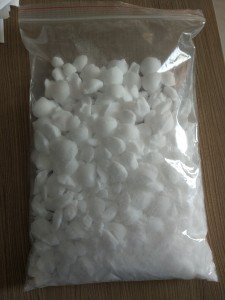Maleic anhydride is a versatile chemical compound that has garnered significant attention in various industries due to its unique properties and wide range of applications. In this blog, we will explore the latest knowledge about maleic anhydride, including its uses, production methods, and recent advancements in its synthesis and applications.
Maleic anhydride, also known as cis-butenedioic anhydride, is an organic compound with the chemical formula C4H2O3. It is a white, solid, and highly reactive substance that is widely used in the production of various chemicals, polymers, and resins. Maleic anhydride is produced through the oxidation of benzene or butane, and it is an important intermediate in the synthesis of maleic acid, fumaric acid, and various other chemical products.
One of the key uses of maleic anhydride is as a precursor for the production of unsaturated polyester resins, which are extensively used in the manufacturing of fiberglass-reinforced plastics, automotive parts, and marine coatings. Maleic anhydride is also used in the synthesis of various specialty chemicals, such as agricultural chemicals, detergents, and lubricant additives. Additionally, maleic anhydride is utilized in the production of water-soluble polymers, paper sizing agents, and as a cross-linking agent in the modification of synthetic rubbers.
In recent years, there have been notable advancements in the production of maleic anhydride, with a focus on improving its sustainability and environmental impact. Research and development efforts have led to the development of novel catalysts and reaction technologies that allow for the more efficient and eco-friendly synthesis of maleic anhydride. Furthermore, there is a growing interest in the use of renewable feedstocks, such as biomass-derived compounds, in the production of maleic anhydride, as a means to reduce the reliance on fossil resources and minimize carbon emissions.
Another area of ongoing research is the exploration of novel applications for maleic anhydride in emerging technologies. For instance, maleic anhydride has shown promise as a component in the development of new biodegradable polymers and as a building block for the synthesis of advanced materials with unique properties, such as high thermal stability and chemical resistance. Additionally, there is increasing interest in the use of maleic anhydride in the formulation of novel pharmaceuticals and drug delivery systems, taking advantage of its reactivity and functional groups for targeted drug release and improved bioavailability.
In conclusion, maleic anhydride continues to be a key player in the chemical industry, with diverse applications and ongoing research efforts aimed at enhancing its production methods and expanding its utility in various sectors. As the demand for sustainable and high-performance materials continues to grow, maleic anhydride is poised to play a significant role in meeting these needs, offering a wide range of opportunities for innovation and advancement in the years to come. Stay tuned for the latest developments in the world of maleic anhydride as researchers and industry professionals continue to explore its potential.
Post time: Jan-09-2024









